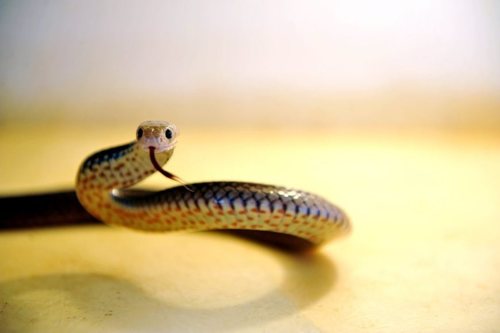See on Scoop.it – First Aid Training
AUSTRALIA is home to 20 of the world’s most deadly 25 species of snakes.
This staggering statistic means that you, your family, a neighbour or pet could come into contact with one of the world’s deadliest snakes when you go on a bushwalk or even in your own backyard.
Snake bite incidents are already occurring this season and St John Ambulance (Qld) is recommending all Queenslanders familiarise themselves with the correct first aid treatment for treating snake bites.
St John Training Manager Darryl Clare said there were many myths involving first aid treatment for snake bites, and it was important for Queenslanders to know fact from fiction.
“A common myth is sucking the venom out of a snake bite – this will simply spread the poison to another person and you will be left with two victims instead of one,” he said.
“Do not wash the bitten area or try to catch the snake – your first step in any situation is to follow the DRSABCD action plan (Danger, Response, Send for help, Airway, Breathing, CPR, and Defibrillation).”
“Ensure the casualty is relaxed as much as possible; reassure them that everything will be ok – this will slow down the time it takes for the venom to go through the body.”
“Apply a pressure bandage with immobilisation, then splint the bandaged limb.”
“Mark the site of the bite on the bandage and write down as much information as you can, such as the time of the bite, a description of the snake and when the bandage was applied.”
Darryl said common symptoms of a snake bite victim included a headache, nausea, drooping eyelids, drowsiness and problems speaking.
“If you are unsure what type of snake bit your casualty, always call triple zero ‘000’ for an ambulance.”
Snake bites – the Australian statistics
- 1500 – 3000 cases of snake bite each year
- Approximately 300 require treatment with anti-venom
- 2-3 deaths per year
- Over the last 25 years the death rate has dramatically decreased due to improved first aid treatment, improved identification and treatment with anti venom.
Source: www.csl.com.au
Signs and symptoms of snakebite
Signs of snakebite are not always visible and symptoms may only start to appear an hour or more after the person has been bitten.
Symptoms that can develop in the first hour or more:
- Nausea, vomiting and diarrhoea
- Headache
- Double or blurred vision
- Drooping eyelids
- Bleeding from the bite site
- Breathing difficulties
- Drowsiness, giddiness or fainting
- Problems speaking or swallowing, voice change
- Pain or tightness in the chest throat or abdomen
- Respiratory weakness or arrest
- Dark urine
Symptoms that can develop up to three hours after the bite:
- Limb paralysis
- Hypoxia
- Cyanosis
- Decrease in the level of conscious
- Snake bite management:
- DRSABCD (Danger, Response, Send for help, Airway, Breathing, CPR and Defibrillation)
- Rest and reassure the casualty
- Pressure immobilisation bandage
- Seek medical aid urgently
DO NOT:
- Wash venom off skin
- Cut bitten area
- Try and suck venom out
- Use tourniquet
- Attempt to catch snake
- Allow casualty to walk
These first aid tips are not a substitute for first aid training.
St John Ambulance offers a range of first aid courses including Apply First Aid, Resuscitation and Workplace First Aid.
For more information visit www.stjohnqld.com.au or call 1300 360 455.
See on www.news-mail.com.au


Recent Comments